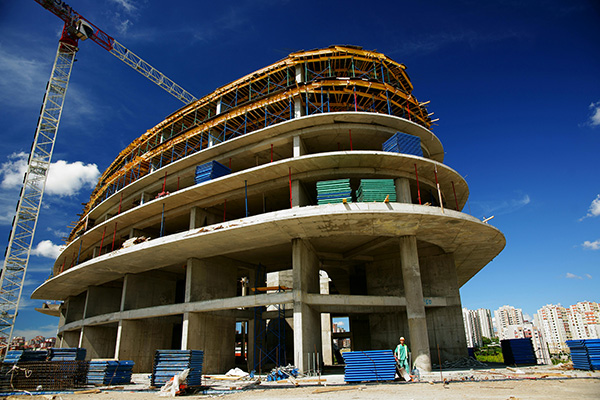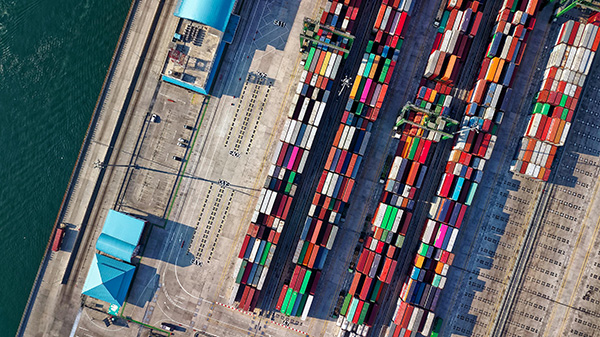Pandemic planning, supply chain resilience and risk registers: lessons learned from the auditors.
By Tony Ollmann, partner with Baker Tilly’s construction risk management practice
The COVID-19 pandemic was a catalyst for significant changes and awareness of challenges in the construction industry. Construction auditors are at the forefront when it comes to identifying lessons learned, highlighting the interplay of supply chain dynamics, cost management, strategic planning, and collaboration on the job site.

Construction leaders quickly learned pandemics are not covered by insurance. The pandemic underscored the importance of thorough understanding of insurance policies, especially regarding pandemic coverage. Auditors realized that pandemics, previously seen as highly improbable, could have substantial impacts on project continuity and construction costs.
In 2020, most construction auditors were already aware of “force majeure,” the contractual clause designed to remove liability for unforeseeable and unavoidable catastrophes that interrupt the expected course of events and prevent participants from fulfilling obligations. Most often associated with natural disasters, these clauses are now acknowledged to cover broader supply chain disruptions, labor market shortages and market volatility. The shift underscores the necessity for robust contract administration and proactive risk management strategies.

Pandemic planning has now become an integral part of project management. In the last four years, auditors have observed a need for proactive approaches, including resource constraint planning, and supply chain adaptability. The entire supply chain still shows volatility, and this is now a widely known variable in construction planning. The supply chain reacts to inflation, tariffs on imported products, transportation bottlenecks, manufacturing bottlenecks and demand from unanticipated sectors.
As a result, auditors are seeing an increase in pandemic clauses with an expectation that contractors have a pandemic plan. Pandemic plans imply proactive resource constraint planning. Project documentation should include proactive supply chain plans and alternative material plans. Working collaboratively, project owners and contractors should agree on alternate choices of product if certain materials are not available.
In addition to material shortages, the pandemic brought other unprecedented challenges with labor shortages. Trade and craft professionals continue to retire without an equal number of replacement workers. The construction industry has been further affected by federal legislation encouraging new construction projects, such as the American Rescue Plan (ARP), the Inflation Reduction Act (IRA) and the Infrastructure Investment and Jobs Act (IIJA).
Despite an increased awareness of all these issues, the construction field is still seeing project management problems, such as the failure to provide adequate notifications of a material constraint followed by inadequate change documentation.
Reactive management has given way to anticipatory strategies considering global economic interdependencies. Effective management of supply chain risk requires a multifaceted approach, including:
More than ever, auditors need to depend on their risk registers. Documentation is still the silver bullet in addressing supply chain issues. Registers help identify and address potential risks associated with supply chain events, labor shortages and cost escalations. Similarly, regular updates and proactive management are keys to effective risk mitigation. Documentation can also be helpful matching long lead time procurement events with actual purchases and project material inventory control.
An auditor’s documentation and work papers should include original purchase orders with effective dates, subsequent purchase orders with suppliers’ invoices, material receivers or shipping documents, engineers’ plan and specification approval, baseline construction schedule, revised construction schedule and revised plans and specifications.
The interdependence of global markets creates additional unpredictability in the construction field. Geopolitical events, political instability and changes in government policy can alter trade routes and affect the flow of goods. There is still a shortage of shipping containers, limited availability of cargo ships, port congestion, and challenges in inland transportation, like trucking and rail networks. New regulations or changes in customs procedures can also slow down the movement of goods across borders.
Supply and demand imbalances also create volatility, as can issues within the manufacturing process, including equipment breakdowns, quality control issues, or shortages of raw materials. More recently, we’ve seen a rise in cybersecurity incidents, including cyber-attacks on key supply chain nodes like ports and logistics companies. Even sudden changes in fuel costs can impact transportation costs and availability, affecting the supply chain.
Unfortunately, human greed can also affect projects. While most contractors and subcontractors are ethical business partners, auditors need to be more vigilant than ever for unscrupulous business practices, including fraud, theft, unauthorized material substitution, and cost shifting. To mitigate these risks, risk registers should include details about the layout of yard security, delivery ticket management, material delivery and rerouting, over-purchasing, buyout oversight, excess material credits and mark-up and profit management.
Cost control and contract negotiation will remain important for years to come in the field of construction. Managing escalating costs requires a strategic approach to contract negotiation and administration. This includes setting up contingency budgets and understanding the implications of market conditions on contract terms.
The post-pandemic era in construction auditing has brought to light the importance of adaptability, foresight, and rigorous documentation. By integrating these lessons into practice, auditors and project managers can navigate the complexities of today’s construction landscape more effectively.
Tony Ollmann is a partner with Baker Tilly’s construction risk management practice. He has more than 25 years of experience in the construction industry providing risk management, project controls and operations consulting services to owners, operators, and contractors. His project experience spans from large complex construction audits to single thread financial controls and process improvement consulting.
In this episode, I sat down with Beejan Giga, Director | Partner and Caleb Emerson, Senior Results Manager at Carpedia International. We discussed the insights behind their recent Industry Today article, “Thinking Three Moves Ahead” and together we explored how manufacturers can plan more strategically, align with their suppliers, and build the operational discipline needed to support intentional, sustainable growth. It was a conversation packed with practical perspectives on navigating a fast-changing industry landscape.